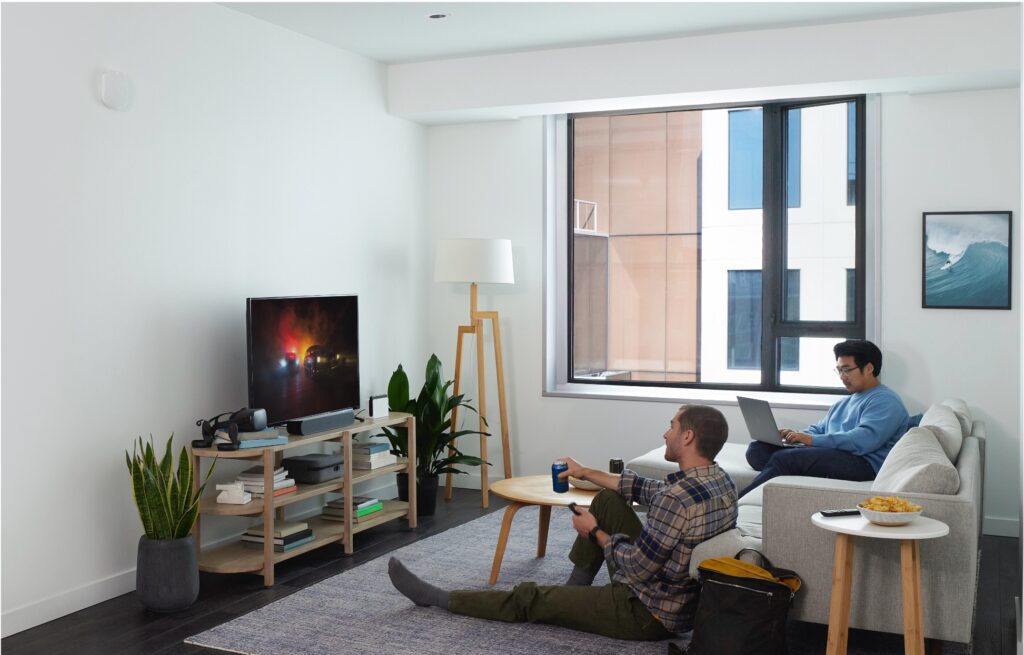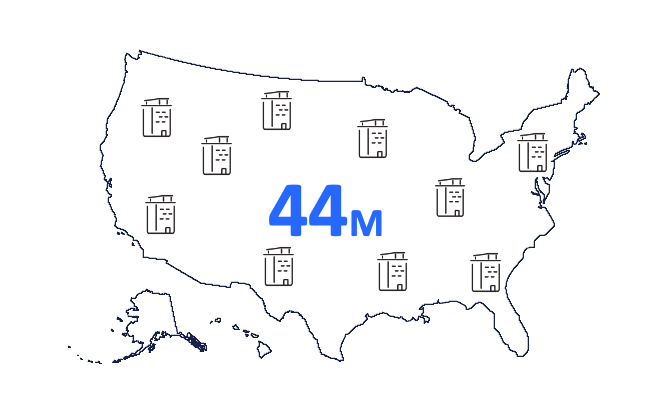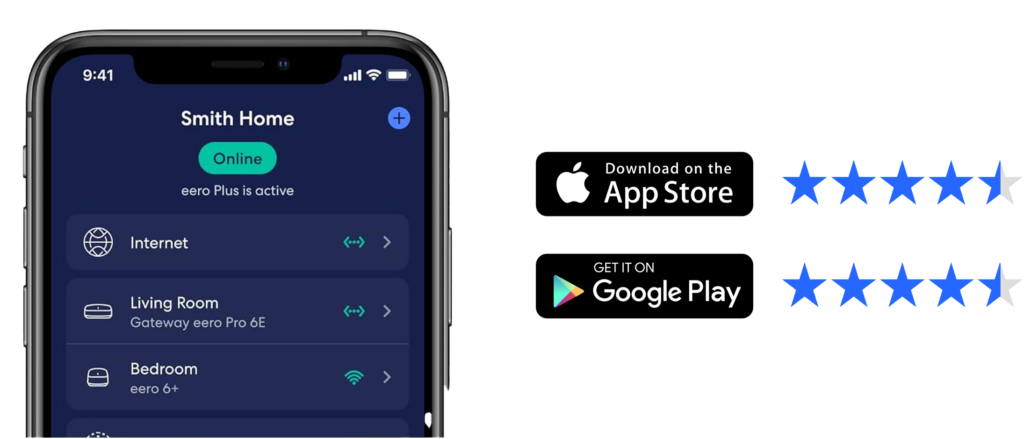
With rising interest rates and the increased cost of homeownership, multi-family communities have become the fastest-growing housing segment in the U.S. Over 44 million people in the country are living in multi-dwelling units (MDUs) and represent nearly one-third of all existing housing.1, 2
While this housing segment is rapidly growing, residents are becoming more discerning—and property and building owners have to compete more and more to stand out. A turnkey experience can differentiate a property. The first opportunity to make or break this relationship is when a prospective or new resident looks at their phone to see if they’re able to connect to high-speed internet. Nearly 75% of residents prefer having their internet already installed in their unit, saving them time and providing some peace of mind during an otherwise chaotic move.3

Wifi is as critical as electricity and water.
Today, wifi is expected to be just as reliable as any other utility. When you want it, it should be there. Spending time figuring out how to set up wifi equipment, troubleshooting with customer service, or waiting for a technician to arrive can be frustrating for a new resident. Each can be easily avoided by allowing residents to instantly connect. This requires a Service Left in Place (SLIP) process where wifi stays in an apartment just like a refrigerator or microwave—ready to immediately welcome a new resident. Residents should also be able to customize their network with ease. If they want to name their network after their favorite team, they should be able to without any difficulty.
Stand out in a sea of sameness.
A booming market for MDUs has brought fierce competition. This can make it difficult for an MDU to stand out in order to attract and retain residents. While some building owners are looking to add or update rooftop terraces, gyms, and pools, others are looking to the future: smart buildings.
With a connected digital ecosystem, property managers can gain efficiencies with smart locks for self-guided tours, leak sensors to alert maintenance staff before a major leak occurs, and thermostats that auto-regulate temperature and save energy (when units are vacant).
Staying ahead means having a dedicated wireless network for building-owned devices to remain connected to the internet at all times, regardless of whether a unit is occupied or not. It means giving property management control of all these devices at scale. It also means using Thread-enabled technology to improve connectivity between IoT devices and Matter, allowing smart home devices to communicate independently. Just like residents, property managers want a turnkey setup with a simple, intuitive system that just works.

The ISP advantage.
ISPs have the most control over the residents’ wifi experience and can provide property owners with incentives to partner together. Competition among ISPs makes them just as invested in creating a better experience in buildings for residents and MDU managers—often walking a tightrope to find that sweet spot of optimal service, while also keeping prices competitive.
For an ISP, growing its business efficiently means getting into more buildings while minimizing the time spent on setup and maintenance. With SLIP in a building, ISPs can leverage a software-controlled move-in/move-out experience, troubleshoot from anywhere, and avoid truck rolls or equipment shipments. And with eero’s remote network management software, eero Insight, ISPs can proactively resolve issues, reduce call times for their support team, and keep networks healthy—increasing efficiency and saving money.
Community wifi reimagined.
eero for Communities is the top-tier service that binds the interests of the resident, MDU, and ISP together. For residents, eero networks are ready for immediate activation and network control through a modern app-based wifi experience. For MDUs, eero delivers the hardware and software they need to create a smart building wifi solution that works across all their units and common areas. For ISPs, eero provides greater efficiency with SLIP, and reduces truck rolls and call times with proactive troubleshooting for customer support teams.
To learn more about how eero’s products and services can deliver the ideal MDU solution, download our latest eero for Communities white paper or visit eero for Communities.

1 “Number of renter occupied housing units in the U.S. from 1975 to 2022,” Statista, September 2023
2 “Multifamily Homes: Types and Trends,” National Association of Home Builders, 2024
3 “Apartment Residents Weigh in on the Hottest Trends in Housing,” The National Multifamily Housing Council, The 2020 NMHC/Kingsley Associates Apartment Resident Preferences Report, 2020

You must be logged in to post a comment.